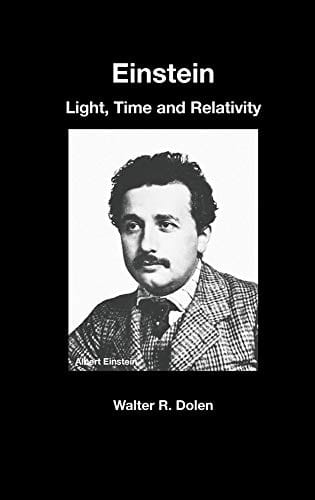Tracing the Origin of Species: Darwin’s Revolutionary Idea
Explore Darwin's "Origin of Species," its historical context, core ideas on natural selection, and the enduring impact on science and society.

Introduction
When Charles Darwin published “On the Origin of Species” in 1859, he ignited a scientific and cultural revolution whose reverberations are still felt today. The book proposed that all life is related through common ancestry and that species diversify over time through a measurable, natural process. This simple yet radical idea forever changed how we study biology, interpret fossils, and even understand our own place in the natural world. By unpacking Darwin’s arguments, the evidence he marshaled, and the impact his work has had, we can appreciate why the text remains a cornerstone of modern science.
The Historical Context
Before Darwin, Western thought on the diversity of life was dominated by the concept of separate creation. Species were regarded as immutable, each crafted individually and fixed since their origin. Yet the Age of Exploration was flooding Europe with new plant and animal specimens, while geologists such as Charles Lyell revealed Earth to be far older than previously imagined. Naturalists began noticing patterns—organisms on nearby islands resembling mainland forms, fossils appearing in predictable geological layers—that hinted at transformation rather than stasis. Darwin, influenced by the voyage of HMS Beagle and buoyed by Lyell’s slow, gradual view of Earth’s processes, synthesized these disparate observations into a cohesive theory.
Key Concepts in “The Origin of Species”
Natural Selection
Natural selection is the engine that powers evolutionary change. Darwin argued that individuals within a population show heritable variation in traits such as beak size, coloration, or resistance to drought. Because resources are limited, organisms struggle to survive and reproduce. Those possessing advantageous variations leave more offspring, gradually shifting the population’s characteristics. Over vast expanses of time, these small changes accumulate, eventually giving rise to new species. Crucially, natural selection requires no guiding hand; it is an automatic outcome of differential survival and reproduction in variable environments.
Variation and Heredity
Darwin emphasized that variation is the raw material for evolution, yet he lacked a precise understanding of genetics. Gregor Mendel’s work on inheritance, which would later unite with Darwinian theory to form the Modern Synthesis, lay unnoticed in a monastery journal. Still, Darwin astutely observed that traits could blend or disappear in offspring, hinting at an underlying mechanism of heredity. He collected extensive data from animal breeders, gardeners, and pigeon fanciers, showing how human selection could exaggerate traits in just a few generations—an analogy for nature’s far slower, but relentless, process.
Struggle for Existence
Inspired by economist Thomas Malthus, Darwin realized that more individuals are born than can possibly survive. Whether the limiting factor is food, nesting sites, or mates, populations inevitably face competition. The “struggle for existence” drives natural selection because only a subset of individuals succeed in passing on their genes. Predation, disease, and environmental change all act as filters, culling less fit variants and favoring those better adapted. This brutal arithmetic, Darwin argued, is not a philosophical stance but a measurable reality borne out by field observations and domestication experiments.
Impact on Science and Society
The reception of Darwin’s book was a mixture of acclaim, curiosity, and controversy. Biologists quickly recognized natural selection’s explanatory power, yet clerics and some scientists bristled at its challenge to literal interpretations of creation. Over time, however, evolutionary thinking permeated comparative anatomy, paleontology, and embryology, offering a unifying framework that tied disparate fields together. Darwin’s ideas also influenced sociology, psychology, and even economics, though not always accurately; social Darwinism, for instance, misapplied biological competition to justify inequality. Still, the broader impact was to embed the notion of change over time into intellectual discourse.
Technological advances in the 20th and 21st centuries—from radiometric dating to genome sequencing—have repeatedly confirmed and refined Darwin’s insights. Transitional fossils like Archaeopteryx and Tiktaalik reveal snapshots of evolutionary stages, while molecular clocks trace divergence times with mathematical precision. The discovery of DNA provided the missing mechanism of heredity, closing a gap Darwin could only speculate about. Today, evolution underpins applied disciplines such as medicine, agriculture, and conservation biology, guiding strategies to combat antibiotic resistance, improve crop yields, and preserve biodiversity.
Modern Perspectives
Contemporary evolutionary biology has extended Darwin’s framework in several directions. The field of evo-devo (evolutionary developmental biology) examines how changes in gene regulation shape body plans, explaining why small genetic tweaks can produce large anatomical shifts. Horizontal gene transfer, especially among microbes, demonstrates that genetic material can leap across species boundaries, adding complexity to the tree of life. Additionally, studies of epigenetics reveal that environmental factors can alter gene expression across generations, offering nuanced feedback between organisms and their surroundings. Far from undermining Darwin, these discoveries enrich his core insight: natural processes generate life’s diversity.
Public understanding of evolution, however, remains uneven. Educational standards vary, and cultural resistance persists in some regions. Science communicators now leverage documentaries, interactive exhibits, and open-access journals to convey the elegance and evidence behind evolutionary theory. Citizen-science initiatives invite nonspecialists to log bird sightings, analyze fossil photographs, or culture microbial samples, transforming abstract concepts into hands-on discovery. These outreach efforts honor Darwin’s legacy of careful observation and invite broader participation in the ongoing quest to understand life’s origins.
Conclusion
“On the Origin of Species” is more than a historical artifact; it is a living document whose ideas continue to evolve alongside the very species it describes. Darwin provided the intellectual scaffolding for modern biology, demonstrating that natural selection, acting on heritable variation within a struggle for existence, can explain the vast tapestry of life. Subsequent research has confirmed his vision, while also unveiling new mechanisms and complexities he could scarcely imagine. By tracing the Origin of Species, we not only peer back into scientific history but also glimpse the dynamic processes shaping our planet’s future biodiversity.
